We arrived in Walnut Grove and followed the signs to the museum.
This sign advertised several Laura Ingalls Wilder museums. Interestingly, the Mansfield Missouri one is not listed here. Also, what’s Spring Valley? It turns out to be where the Wilder family (Almazo’s parents) lived after they moved from New York State. Laura and Almanzo lived there after De Smit but before living in Florida.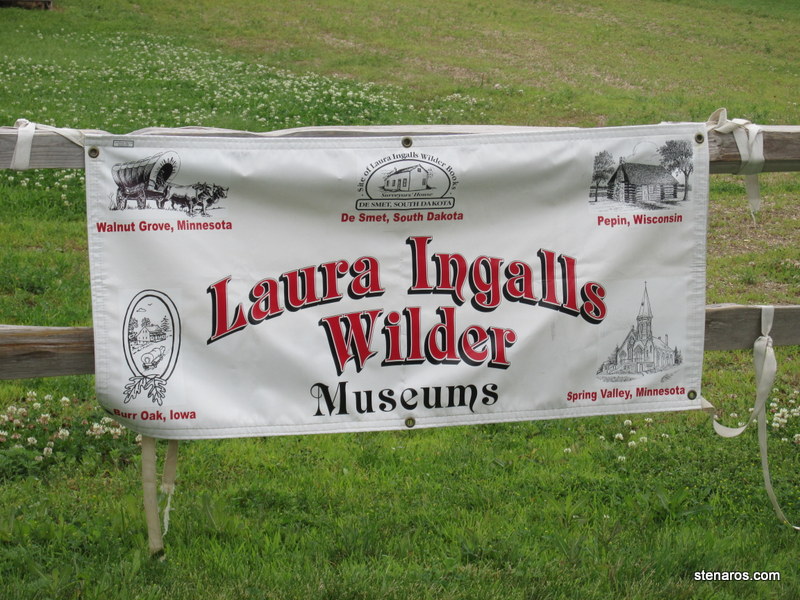
We visited the store to buy our tickets and I bought a pressed penny. I went with Jack.
There are two parts to the Laura Ingalls Wilder part of this museum: books and tv series. The events depcited in the book On the Banks of Plum Creek happened outside of Walnut Grove and the tv series Little House on the Prairie was set in Walnut Grove.
Being a fan of the books and not the TV show, I was interested in the book part of the museum.
This was very cool. They had several piece of illustrator Garth Williams’s work. At the top is the rough sketch, then both the black and white and the color version of the final drawing. Below that is the text from the book. This picture will also come in handy for the next post, so take a good look.
Here is Nellie Oleson being mean.
Actual things Laura owned. (The museum would phrase this as ACTUAL things Laura OWNED!!!!)
The museum’s system indicating items owned by Laura Ingalls Wilder were backed by the shiny green border.
I found this museum to be a little heavy on things that weren’t really museum-quality like this framed Scriptural GUIDE. If you are curious as to what Psalm 51 is, it’s here.
However, some of the not-so-museum-quality items made me laugh. Like this one.
The museum also included pictures and stories of people in the Walnut Grove area that Laura adapted for characters. And here’s a blow up of a map Laura drew of Plum Creek.
We then entered the “TV” section of the museum, which I was not at all enamored with. Here are two pictures of the actor/actual people. Note: I’ve not seen this photo of Charles Ingalls before. Why is he sticking his finger in his ear?
There was a Walnut Grove mural and photos from the television series, as well as episodes of the television series playing. There was also memorabilia from cast reunions which took place in Walnut Grove (though the show was filmed in California).
After exiting the book/tv part of the museum, it was time to wind our way through the other exhibits. These included a dugout.
This dugout (unlike the one we visited in the prior post) has whitewashed walls.
It is very small.
As Sara demonstrates.
There was also a schoolhouse.
And a fancy house that had exhibits of a variety of things. In front of it, you can see the reconstructed prairie.
Sara inside the fancy house playing dress-up.
There was another building with a post-office where you could sort letters, a covered wagon and other such things.
This house was across the street from the museum. But what’s relevant is the sign in the yard.
Master’s Hotel was once here. The brochure says it’s where Laura once worked, but all googling leads to the Master’s Hotel in Iowa which Charles Ingalls managed. I did find a link for this book, which spells the hotel this way: Masters’ Hotel.
Happily, we availed ourselves of the head-in-the-hole opportunities, first as farmer and wife.
Then as children.
There was also a covered wagon.
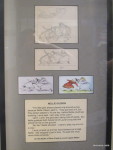

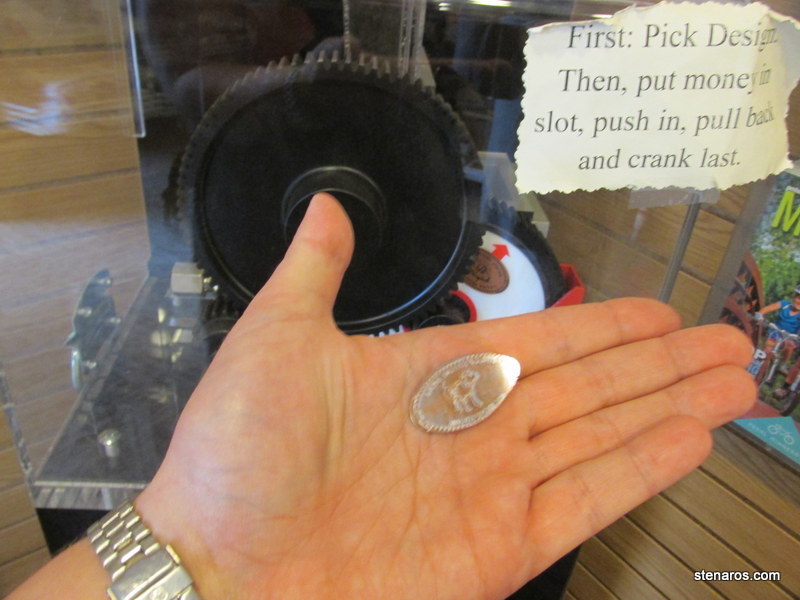
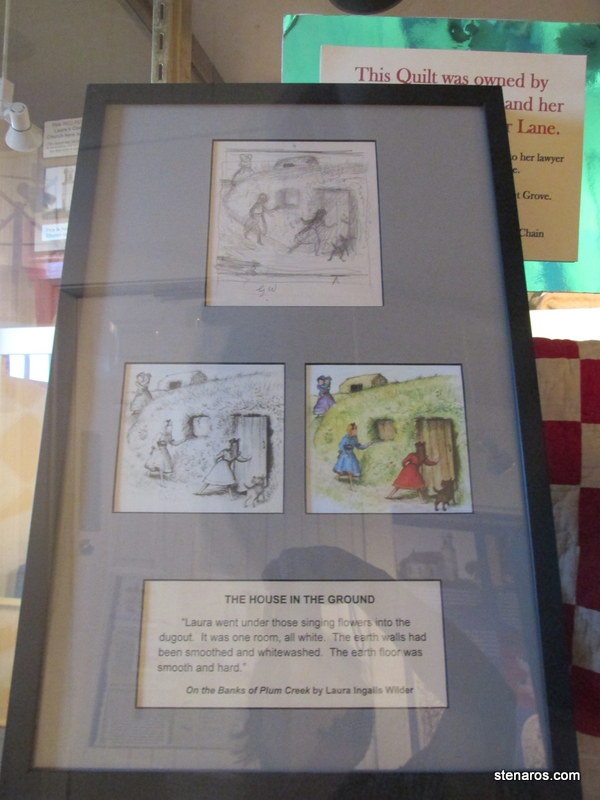

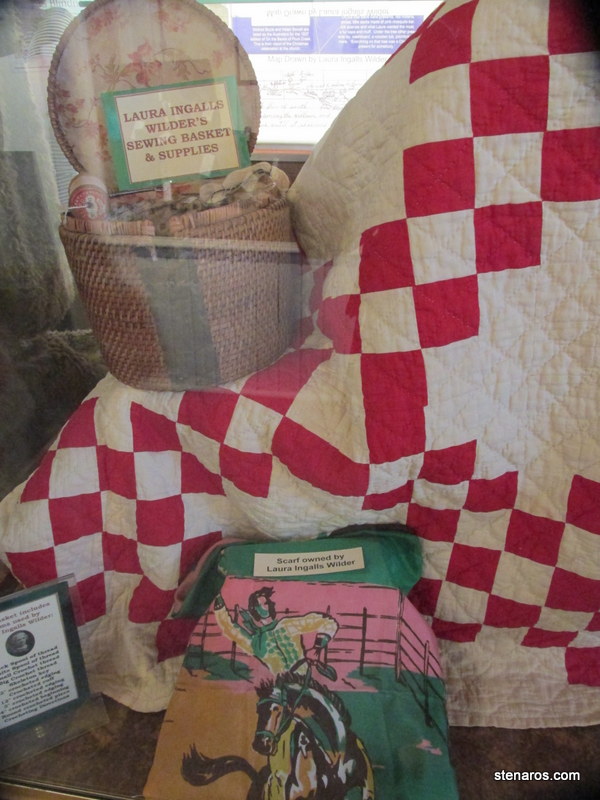
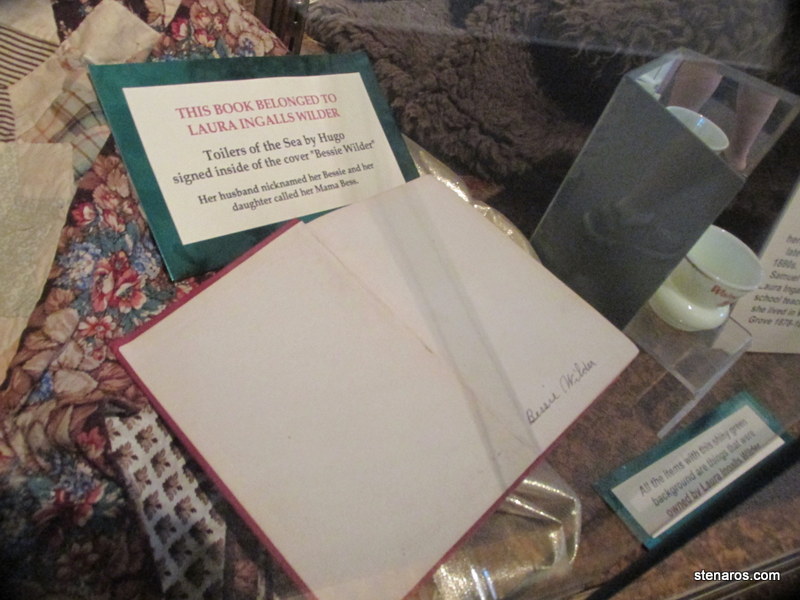


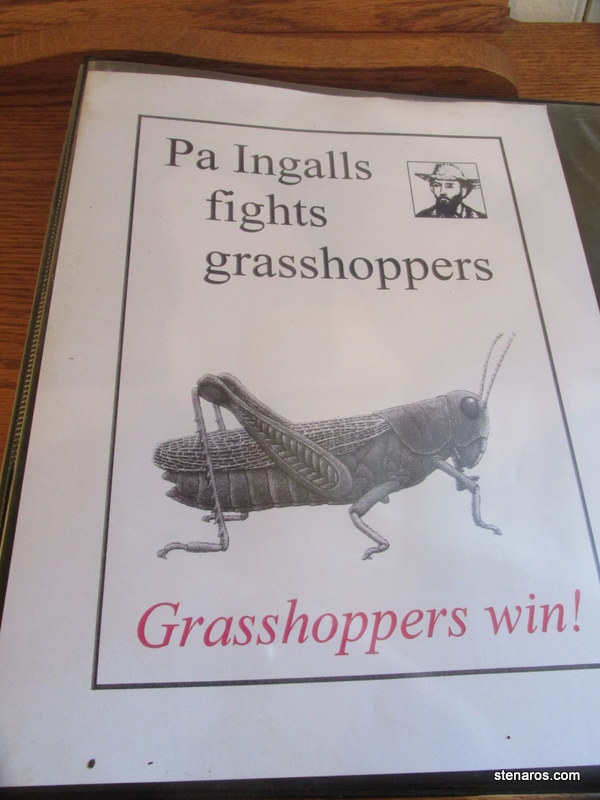
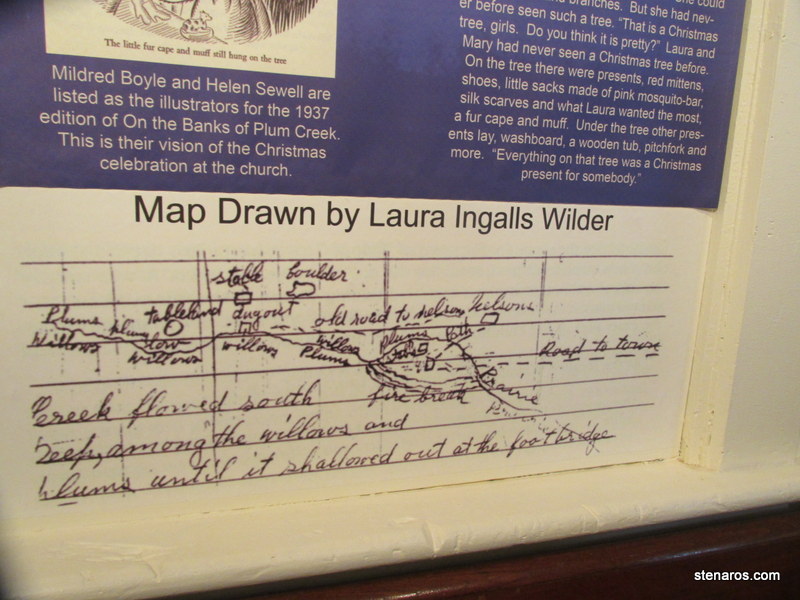


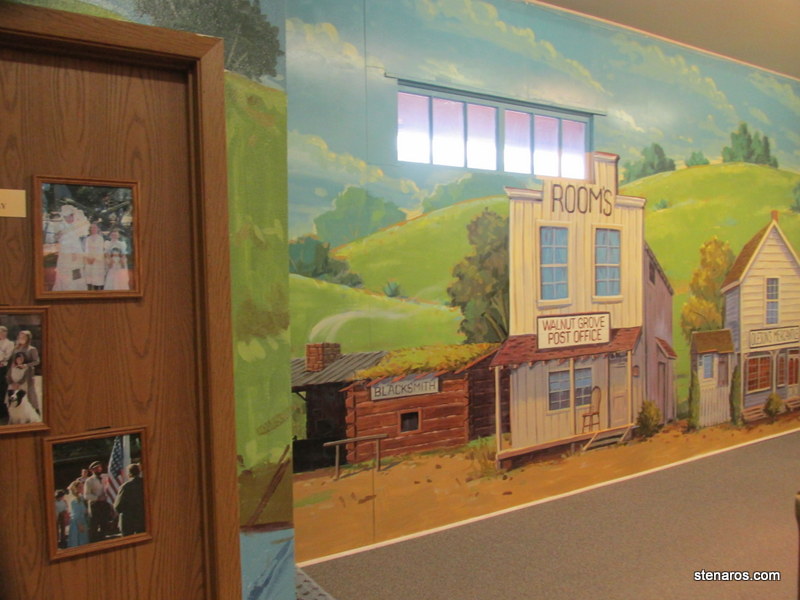



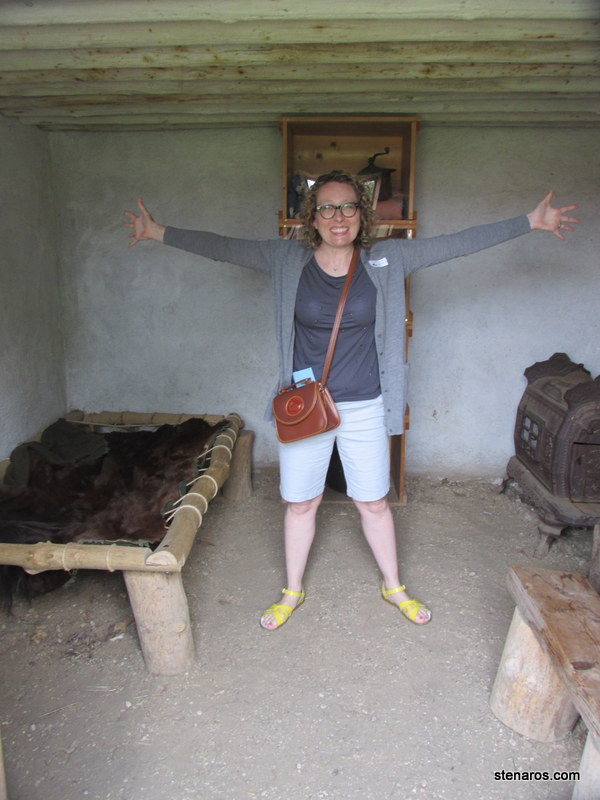

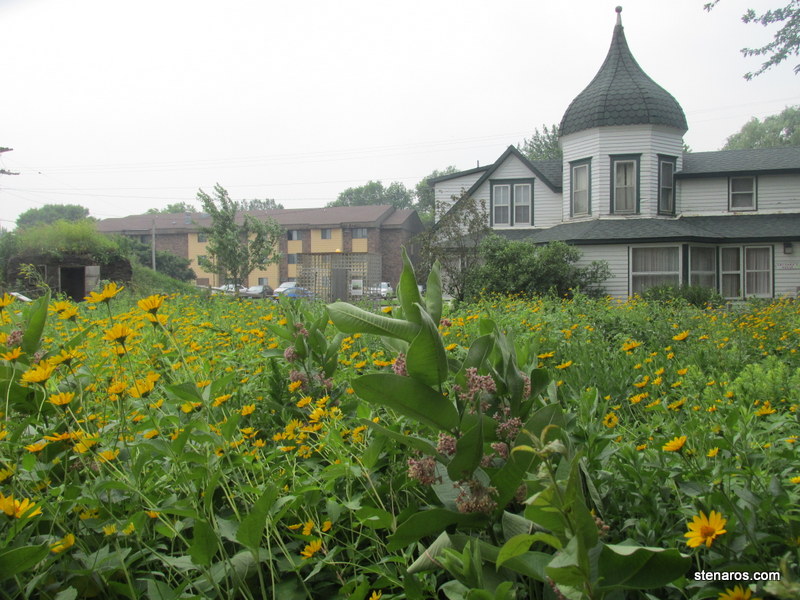

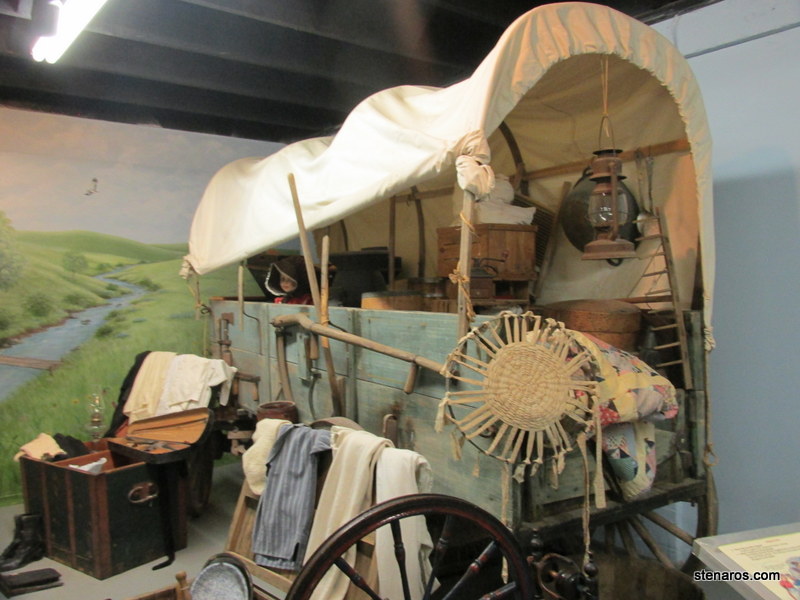
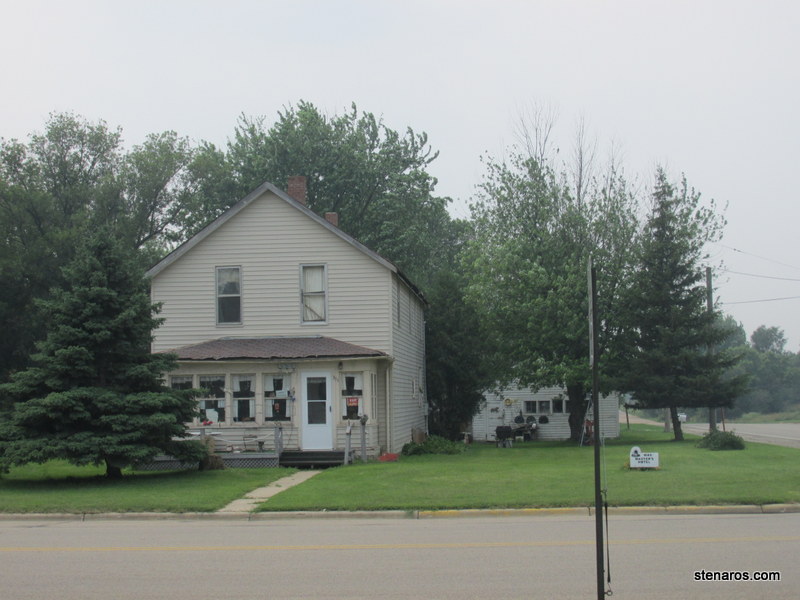




Oh head-in-a-hole pictures turned out pretty fun! Yay us!
It was also nice to be here with you to get the “the real stuff is in MO” commentary!
Holly wingspan, Batman! It’s my ape arms at work. Booyah!
Okay, what’s the difference between a dugout and a sod house? I should have asked in the last post but felt I’d already asked enough questions. Is it just a matter of size? I really like the picture of Sara playing dress up, and the one of you guys on the covered wagon.
Good question! A dugout is dug into a hill or some such thing like that. But still made of sod. It’s just you don’t have to sod as much because the hill acts as parts of the wall. Sod houses have all four walls made of sod and are free standing.
I wish I can go there because I saw the whole entire season and other films of Little House on the Prairie!